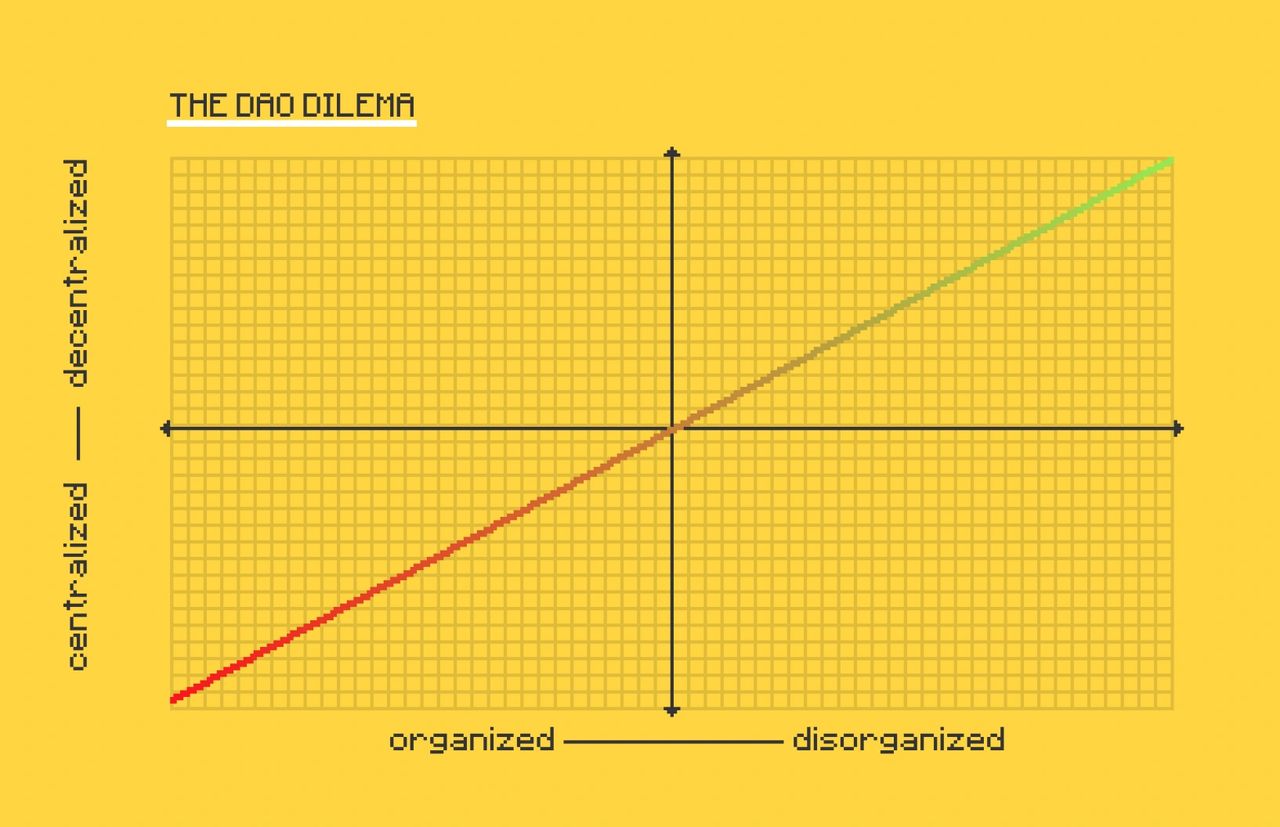Immediate and complete decentralization is not only difficult to execute well, it is also impractical for most projects. Without a doubt, centralization at early stages of growth makes it easier to coordinate, launch, and rapidly iterate toward product-market fit. As a result, many projects seek a “Progressive Decentralization”, the process of relinquishing centralized control of a resource, system, or organization over time, in phases.
What Is The Purpose Of Progressive Decentralization In DAOs?
The primary purpose of Progressive Decentralization is to test, stress, break, and then rebuild components of the DAO governance framework such that code can be secured against malicious attacks, whether they be external or internal.
A perfect example of a project with a technically complex and innovative ecosystem that required, planned, communicated, and then executed on a mission of Progressive Decentalization is Maker DAO. Maker took six years to realize its vision of a completely decentralized and sustainable ecosystem! In the announcement “MakerDAO Has Come Full Circle”, Maker DAO co-founder Rune Christensen said:
“Maker has come a long way in a relatively short period of time. It’s gone from a DAO, created by myself and a few passionate developers, to a Foundation tasked with bootstrapping an amazing project, and back to a DAO… The global Maker community is now responsible for every aspect of the Maker Protocol and the DAO.”
Progressive Decentralization Visualized
DAOs, whether they plan a Progressive Decentralization or not, typically exist on a spectrum between centralization and decentralization. And, unfortunately, increasing decentralization does often result in an increase in disorganization, a disorganization that results in low-impact resources – those resources that are not used to their fullest capacity and value.

Progressive Decentralization Playbook
The Progressive Decentralization Playbook below gives some advice for DAOs in early, mid, and late stages of growth.

Final Thoughts
Progressive decentralization represents a pragmatic middle path for DAOs navigating the tension between operational efficiency and democratic ideals. Rather than viewing decentralization as a binary state to be achieved overnight, this approach acknowledges the reality that sustainable governance structures must be built thoughtfully and tested rigorously.
The journey from centralized inception to decentralized maturity is not merely a technical transition—it’s an organizational evolution. Each phase of decentralization serves as a stress test, revealing vulnerabilities that might otherwise remain hidden until exploited. This methodical approach allows DAOs to build resilience while maintaining the agility needed to adapt and grow.
However, the trade-off between decentralization and coordination efficiency remains a fundamental challenge. As DAOs progressively distribute control, they must develop new mechanisms to prevent the dissipation of focus and resources. The goal is not maximum decentralization at any cost, but rather finding the optimal balance that preserves both security and effectiveness.
Ultimately, progressive decentralization is about building trust—trust in the code, trust in the governance processes, and trust among community members. By taking measured steps toward decentralization, DAOs can create robust systems that fulfill the promise of distributed governance while remaining capable of decisive action. The path may be gradual, but it leads to more resilient and sustainable decentralized organizations.
Thanks for reading!
